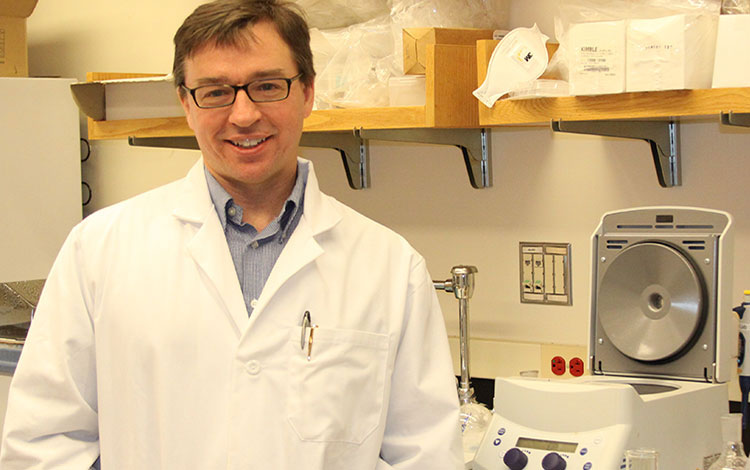SOP Faculty Testify During FDA Generic Drug Regulation Public Meeting
Drs. Hoag and Polli examine current regulatory science initiatives aimed at generic drugs and discuss ways in which existing initiatives can be improved.
By Malissa Carroll
July 3, 2013
On June 21, two faculty members from the Department of Pharmaceutical Sciences (PSC) at the University of Maryland School of Pharmacy visited the Food and Drug Administration (FDA) to testify during its Generic Drug User Fee Amendments of 2012 (GDUFA) Regulatory Science Initiatives public meeting. Stephen Hoag, PhD, professor and director of the School’s Good Manufacturing Practice (GMP) Facility, and James Polli, PhD, the Shangraw/Noxell Endowed Chair in Industrial Pharmaceutics and director of the newly launched Master of Science in Regulatory Science program at the School of Pharmacy, delivered presentations addressing the need for more research in the areas of bioequivalence and manufacture of generic drugs.
“Eighty-five percent of the prescriptions filled in the United States are for generic drugs,” says Andrew Coop, PhD, professor and chair of PSC. “The presentations delivered by Drs. Hoag and Polli provided valuable information and suggestions for future research that I believe will be instrumental in helping the FDA continue to ensure that these important drugs meet the same rigid standards and that their manufacturing, packaging, and testing sites pass the same quality standards as those of brand-name drugs.”
Designed to speed access to safe and effective generic drugs to the public and reduce costs to industry, GDUFA requires pharmaceutical companies to pay user fees that supplement costs incurred by the FDA as it reviews generic drug applications and inspects facilities. These fees help the FDA reduce its number of pending applications, decrease the average time required to review each application, and increase risk-based inspections. The public meeting brought researchers from government, academia, and industry together to review the current status of regulatory science initiatives for generic drugs outlined in GDUFA and offer input on research priorities in the area.
Entitled “Quality Challenges and Research Needs in the Generic Pharmaceutical Industry,” Hoag’s presentation examined quality issues in the generic drug industry and discussed the need for more research in the areas of material science studies, including the area of excipient properties; product development; product manufacturing; and post-approval filings.
“To ensure the continued quality of generic drugs and lower the cost of manufacturing these drugs, we need to improve communication between the FDA, academia, and the pharmaceutical industry,” says Hoag. “First and foremost, we want to protect the public’s health, but we want to make sure that we do that in a way that does not excessively increase costs for manufactures and patients.”
However, determining how to do this while continuing to improve and modernize the pharmaceutical manufacturing industry is challenging. “There is still much research that needs to be done to help the FDA improve its review process,” says Hoag.
Following Hoag’s presentation, Polli spoke about bioequivalence between the brand-name and generic drugs used to treat epilepsy. Because of the increasingly complex formulations of anti-epileptic drugs, including extended-release formulations, Polli recommended that the FDA continue to press for high quality standards, particularly for higher risk products.
“The high standards that currently apply to brand-name drugs, including drug development frameworks, quality-by-design, and the evaluation of design space, should equally apply to generic drugs,” says Polli. “If a patient with epilepsy switches from a brand-name medication to a generic medication, he or she should expect that seizures will be controlled at the same level with both products. If those medications are not bioequivalent, the person risks having an unpredictable seizure, for which the results could be disastrous if he or she was driving a car or working around dangerous machinery.”
Polli notes that the industry would also benefit from the development of in vitro tools that predict in vivo product performance, including the development of in vitro tests that can replace some in vivo bioequivalency studies in humans, which would provide a measure of regulatory relief.
Information collected from the presenters during this meeting will be used by the FDA to develop an annual list of regulatory science initiatives specific to generic drugs. The FDA will also take this information into account as it develops its FY 2014 Regulatory Science Plan.



